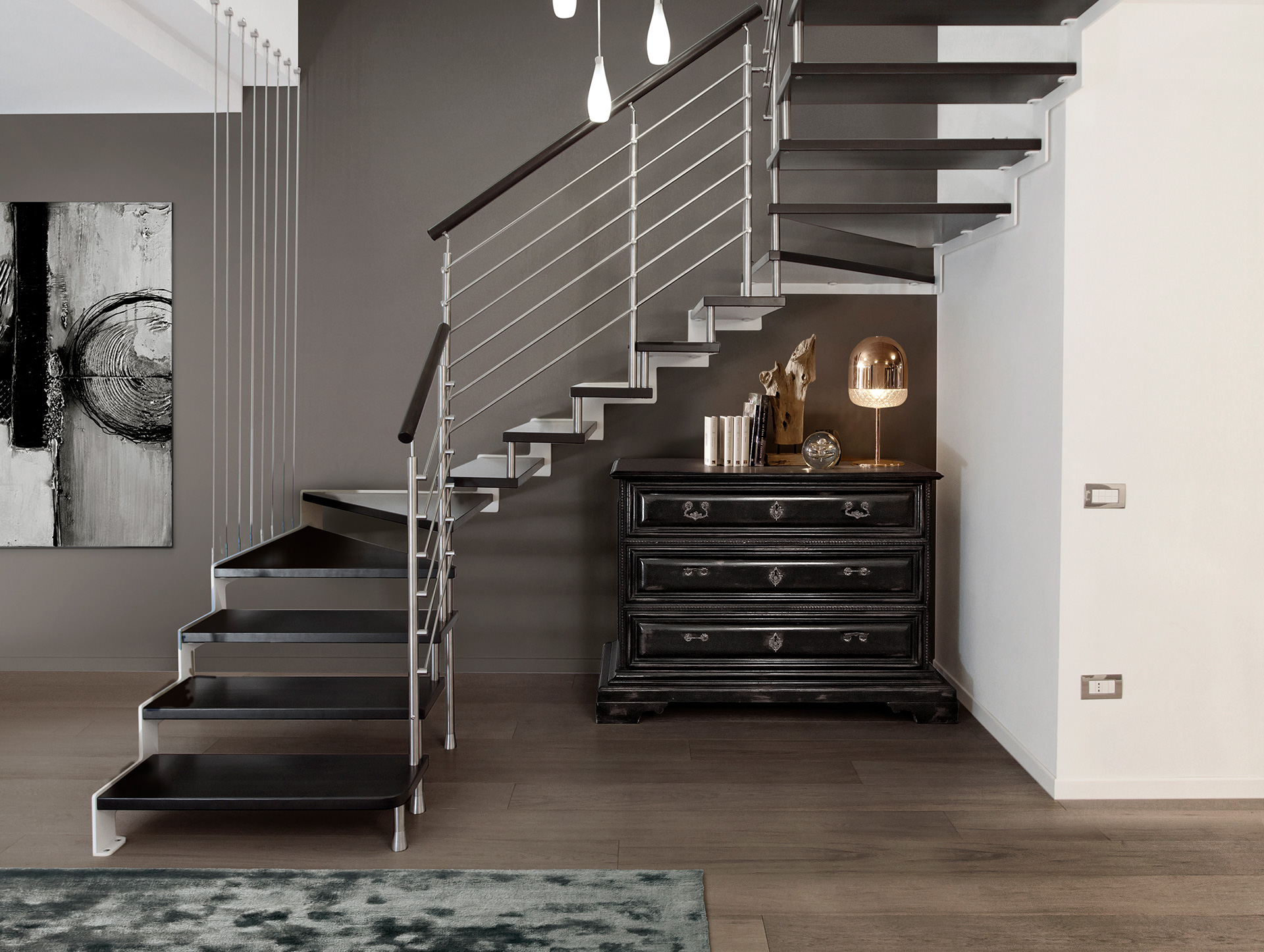
The creation of custom interior stairs is a complex process that requires meticulous planning and specific technical skills. From space evaluation to material selection, from design to construction, each phase must be carefully managed to achieve a final result that is safe, functional, and aesthetically pleasing. Relying on the expertise of professionals in the field of interior stairs is crucial to realize a tailor-made project that meets your specific space and aesthetic needs. But what are the aspects to consider when approaching the design of custom stairs? Let's explore together.
1. Space Evaluation
First of all, it is essential to analyze the available space. Accurately measuring the height between floors, the width of the stairwell, and the surrounding space is essential to determine the most suitable type of stairs (straight, spiral, L-shaped, U-shaped, etc.).
• Height between floors: measure the distance from the floor of the lower level to the floor of the upper level.
• Available space: check the width and depth of the stairwell.
• Obstacles: consider doors, windows, walls, and other structural elements that could affect the design.
2. Design and Material Selection
The design of the stairs must harmonize with the style of the house. Stairs can be made from various materials, each with its own aesthetic and functional characteristics.
• Common materials: wood, metal, glass, concrete.
• Style: modern, classic, industrial, minimalist.
3. Structural Design
A detailed project is fundamental to ensure the stability and safety of the stairs.
• Dimension calculations: determine the number and height of the steps (riser), the depth of the steps (tread), and the length of the staircase.
• Inclination: the optimal angle of inclination for an interior staircase is generally between 30 and 45 degrees.
• Supporting structure: plan beams, supports, and any fastening elements.
4. Regulations and Standards
Every project must comply with local building regulations. The main standards concern:
• Riser and tread: the riser of a step should not exceed 18-20 cm, while the tread should be at least 25-30 cm.
• Handrails: handrails must be sufficiently high (minimum 90 cm) and have balusters spaced to prevent accidental falls (less than 10 cm distance between bars).
• Maximum load: check the maximum load the staircase must support, based on the number of people who will likely use the stairs simultaneously.
5. Construction and Installation
Once the design is completed, the construction of the staircase begins. The materials are cut and shaped according to the project, then assembled and fixed in place. At New Living, every staircase is pre-assembled in-house to ensure perfect installation at the client's location. In addition to state-of-the-art laser cutting technology that ensures precision and speed, our bending process allows us to shape curved and customized handrails according to the client's needs. Metal bending, carried out with artisanal knowledge and advanced technological support, is fundamental for the creation of strong and safe structures. Finally, painting represents another of our standout services: thanks to our specialists' experience and the use of cutting-edge robotic machinery, we can offer durable and high-quality finishes.
Contact New Living and Discover the New Furniture Trends
Our professionals are constantly updated on the latest trends in architecture, construction, and design, thanks to continuous commitment to research and innovation. By collaborating with the New Living team, you can transform your vision into reality, with the certainty of receiving expert and personalized advice that considers your needs and style.
Contact us or visit us in the showroom swe will be happy to guide you in choosing the best materials and the most suitable design for your project, ensuring a solution that combines beauty, safety, and innovation.